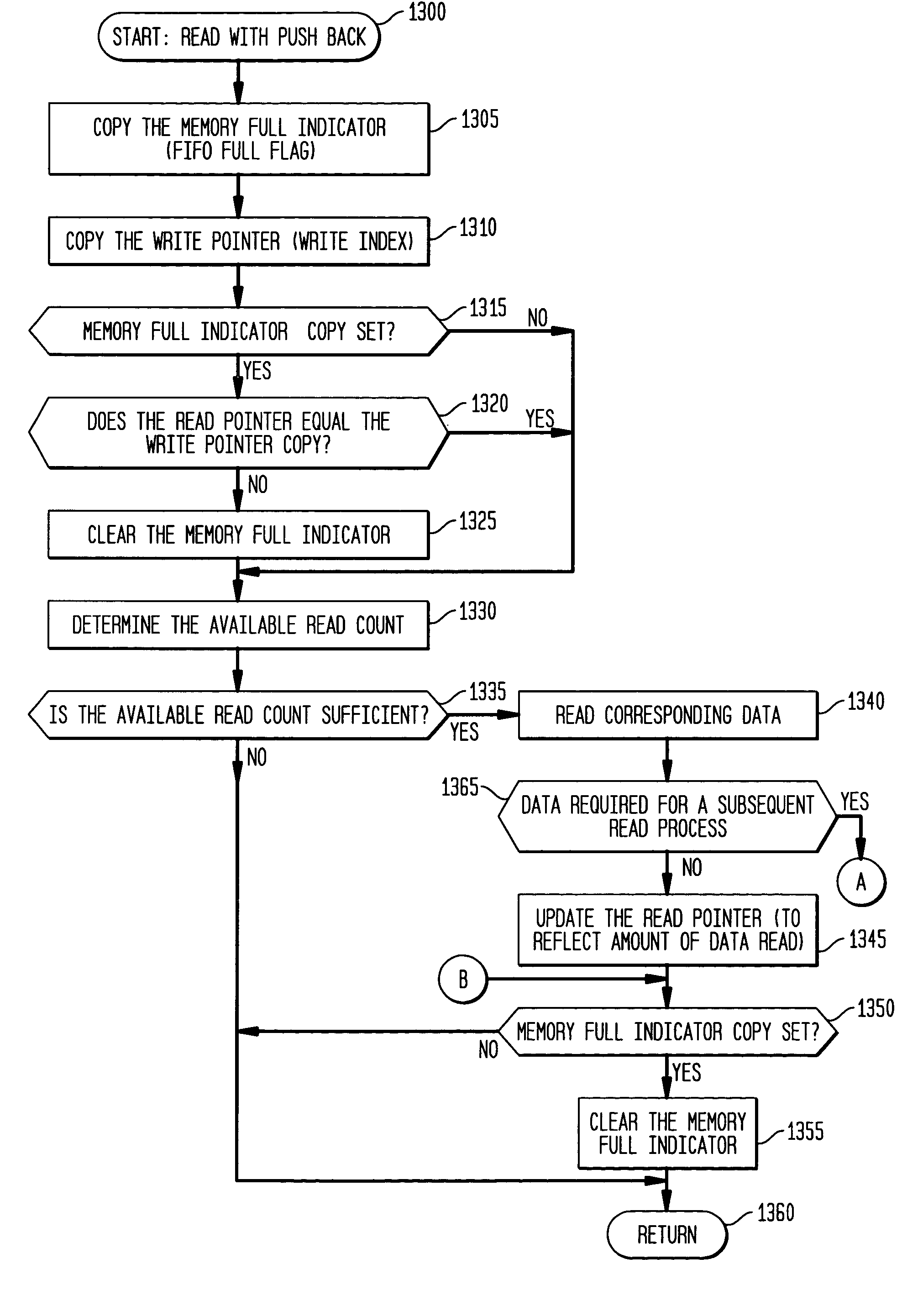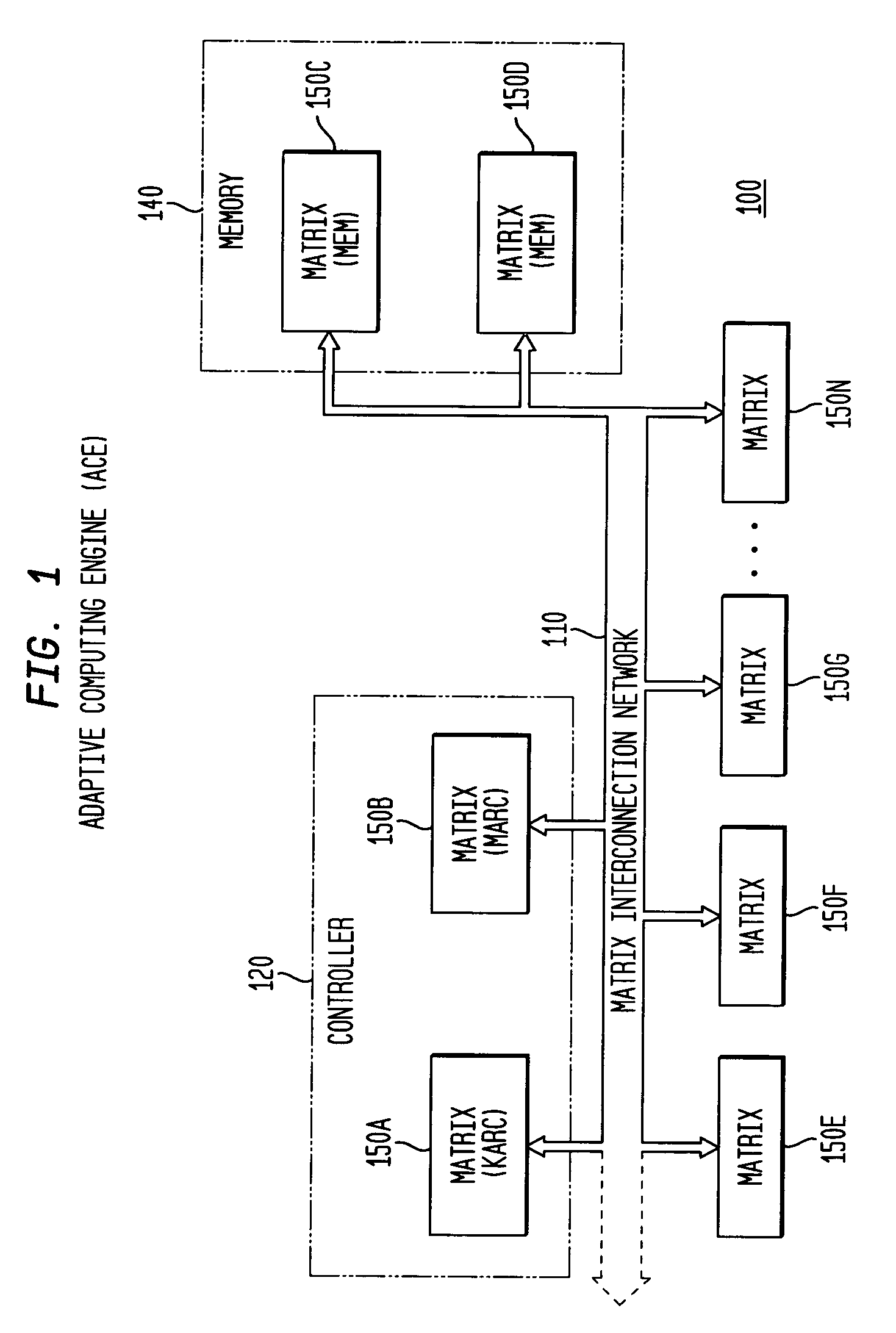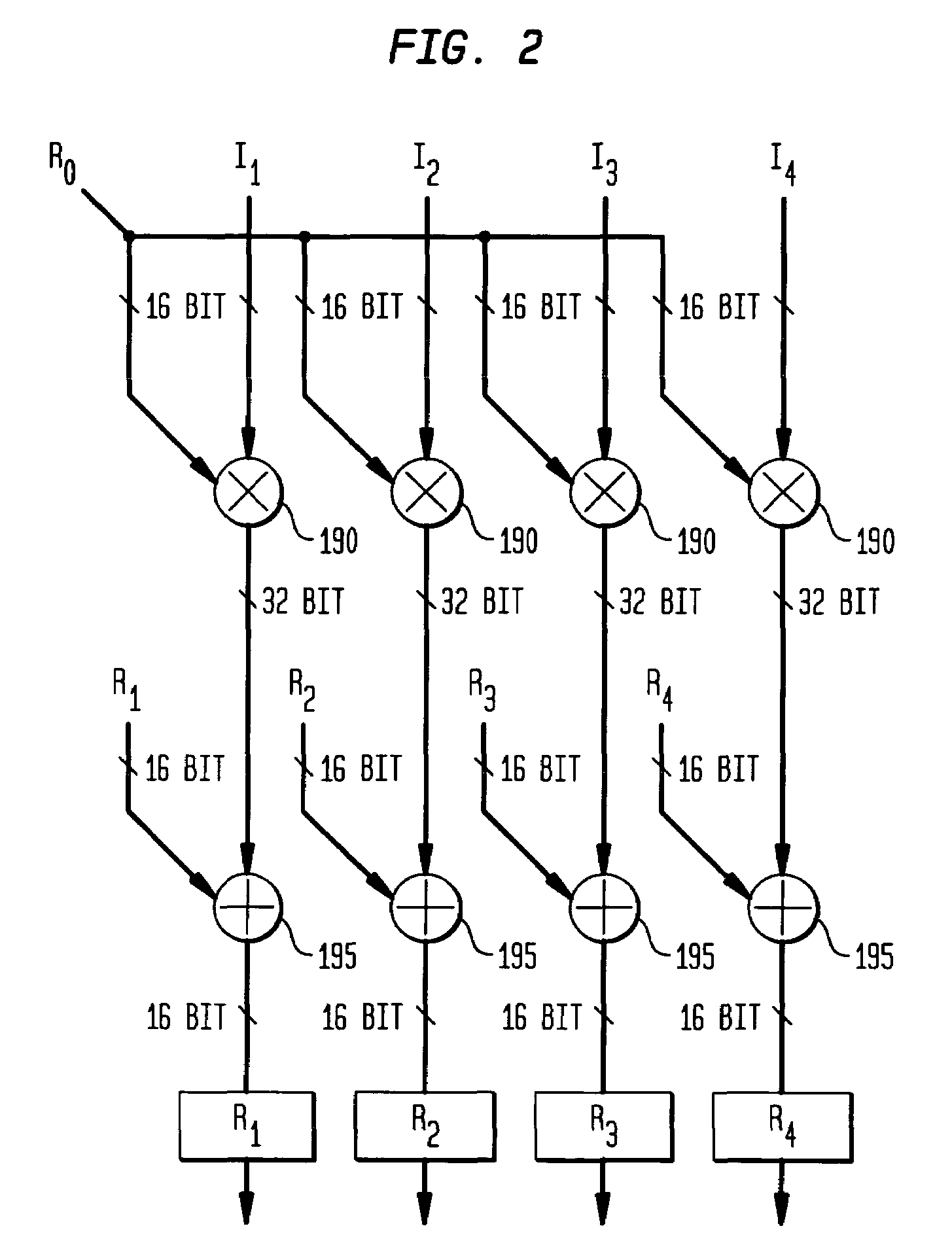Asynchronous, independent and multiple process shared memory system in an adaptive computing architecture
a shared memory and adaptive computing technology, applied in the field of memory management for integrated circuits and systems, can solve the problems of slow memory access, unsuitable for high speed operations, and control of data flow processing to implement an algorithm
- Summary
- Abstract
- Description
- Claims
- Application Information
AI Technical Summary
Benefits of technology
Problems solved by technology
Method used
Image
Examples
Embodiment Construction
[0032]While the present invention is susceptible of embodiment in many different forms, there are shown in the drawings and will be described herein in detail specific embodiments thereof, with the understanding that the present disclosure is to be considered as an exemplification of the principles of the invention and is not intended to limit the invention to the specific embodiments illustrated.
[0033]As indicated above, the present invention provides a system and method for implementation and use of a shared memory, such as a First In-First Out (FIFO) buffer or memory, in an adaptive computing architecture. In accordance with the present invention, the shared memory may be accessed both independently and asynchronously by one or more processes, allowing data to be streamed to multiple processes without regard to synchronization of the plurality of processes. The present invention also provides for “push back” after a memory read, for applications in which it is desirable to “unrea...
PUM
 Login to View More
Login to View More Abstract
Description
Claims
Application Information
 Login to View More
Login to View More - R&D
- Intellectual Property
- Life Sciences
- Materials
- Tech Scout
- Unparalleled Data Quality
- Higher Quality Content
- 60% Fewer Hallucinations
Browse by: Latest US Patents, China's latest patents, Technical Efficacy Thesaurus, Application Domain, Technology Topic, Popular Technical Reports.
© 2025 PatSnap. All rights reserved.Legal|Privacy policy|Modern Slavery Act Transparency Statement|Sitemap|About US| Contact US: help@patsnap.com



